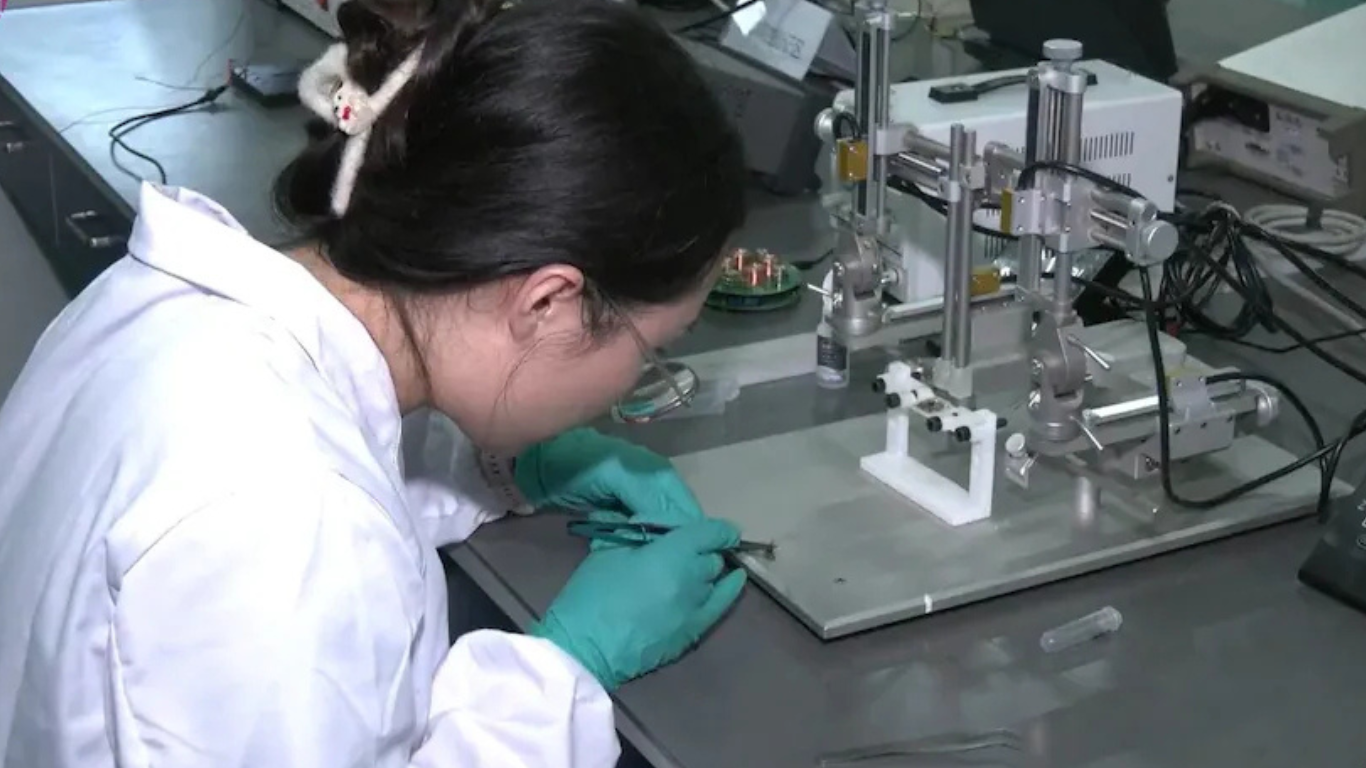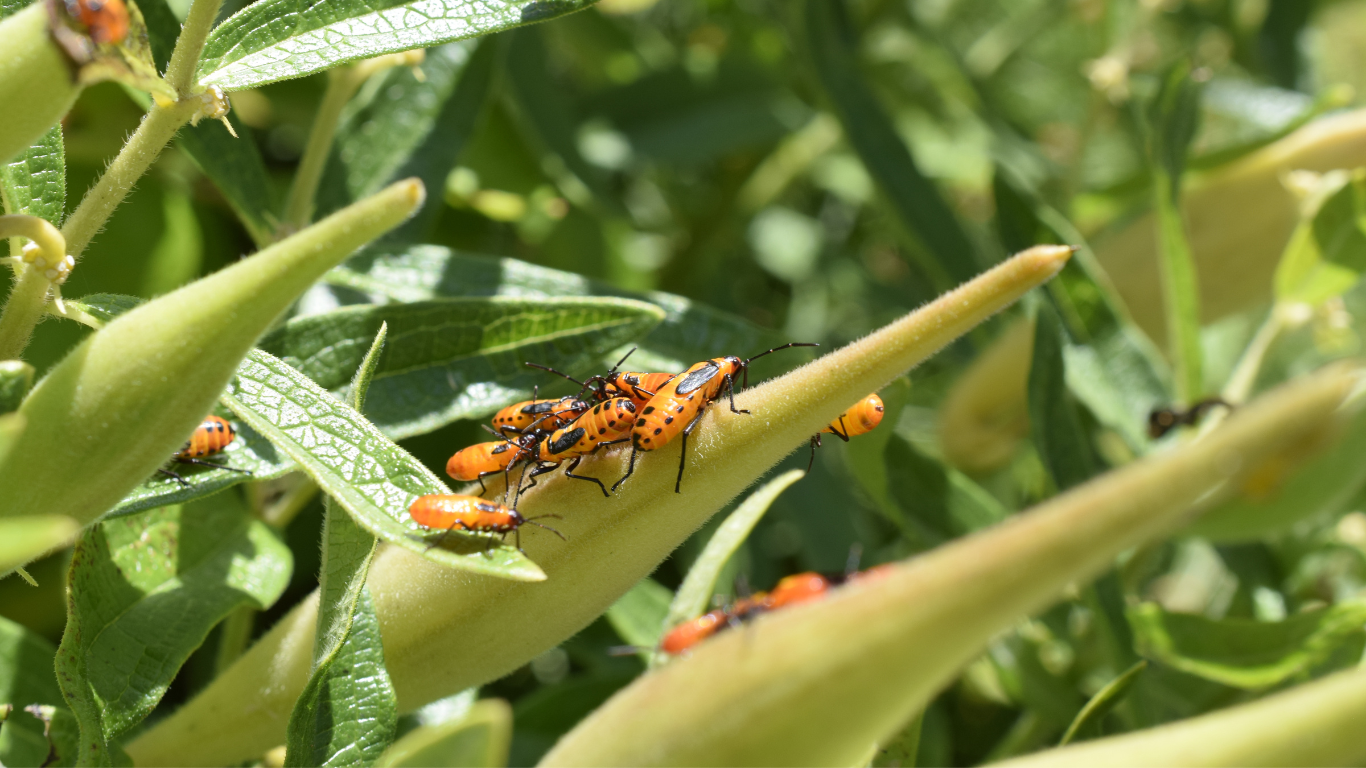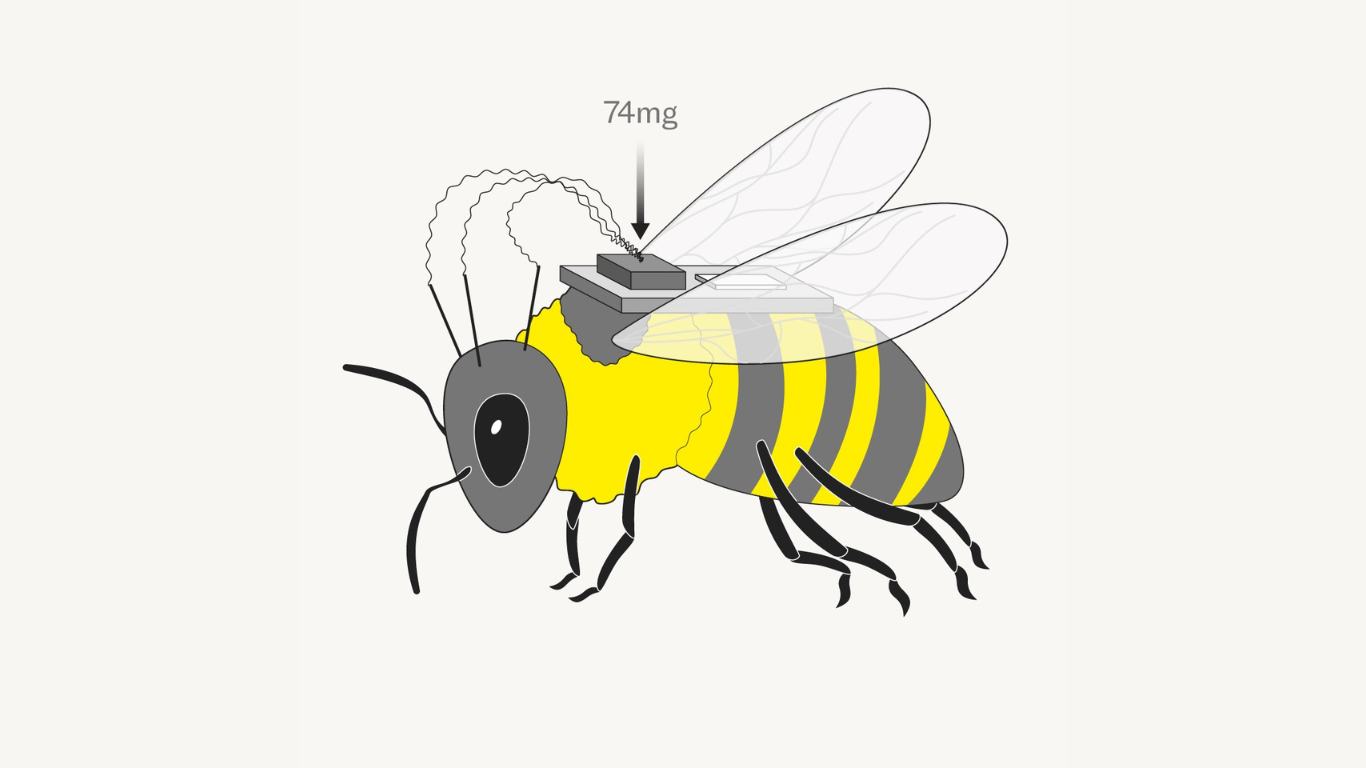Article written by Allegra Mendelson
Originally published by The Telegraph (July 10, 2025)
Scientists direct where insects fly by inserting controllers in their brains
How it works:
The brain-controlling device, weighing 74mg, is strapped to the bee's back
Scientists in China are turning bees into cyborgs by inserting controllers into their brains and deciding where they should fly.
The bees – part insect, part machine – could serve as military scouts or be used to search for survivors following a natural disaster.
Zhao Jieliang, a professor at the Beijing Institute of Technology, and his team recently developed the world’s lightest brain controller – weighing only 74 milligrams, or less than a pinch of salt.
The device is strapped to the back of a worker bee and pierces its brain with three needles to instruct it to fly in specific directions.
Based on the tests conducted by Prof. Zhao and his team, the device worked nine times out of 10, and the bees obeyed the instructions.
With this type of technology, the scientists believe that “cyborg bees” can be used in covert operations or in missions in locations inaccessible to humans.
The microdevices can be equipped with cameras, listening devices, and sensors that allow the insects to collect and record information, which can then be relayed back to their operator.
Given their small size, they could also be used for discreet military or security operations, as they would be able to crawl through small spaces that humans and larger robots wouldn’t be able to reach and do so without arousing suspicion.
“Insect-based robots inherit the superior mobility, camouflage capabilities, and environmental adaptability of their biological hosts,” Prof. Zhao and his colleagues wrote in their paper, which was published in the Chinese Journal of Mechanical Engineering on June 11.
“Compared to synthetic alternatives, they demonstrate enhanced stealth and extended operational endurance, making them invaluable for covert reconnaissance in scenarios such as urban combat, counterterrorism, and narcotics interdiction, as well as critical disaster relief operations,” they wrote.
Earlier reports on this research showed scientists outfitting other insects, such as beetles, with microchips and wiring, which they would use to control the bug’s movement with infrared rays and Bluetooth signals.
One of the “backpacks” that the scientists had developed weighed only 23 mg, nearly a third of what the cyborg bees carry.

Scientists in Singapore have also developed miniature cyborg controllers, but these were bigger and heavier.
These devices, however, were strapped to cockroaches, which were used to help the search and rescue efforts following Myanmar’s 7.7 magnitude earthquake in March.
Several other countries, including the US and Japan, are also racing to create cyborg insects.
While Prof. Zhao’s team has made great strides in advancing the technology, challenges remain.
For one, the current batteries aren’t able to last very long, but any larger and the packs would be too heavy for the bees to carry.
The same device cannot easily be used on different insects, as each responds to signals on different parts of their bodies.
China has been working to miniaturize its technology in other fields, with the country unveiling mosquito-sized drones in June as well.





